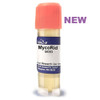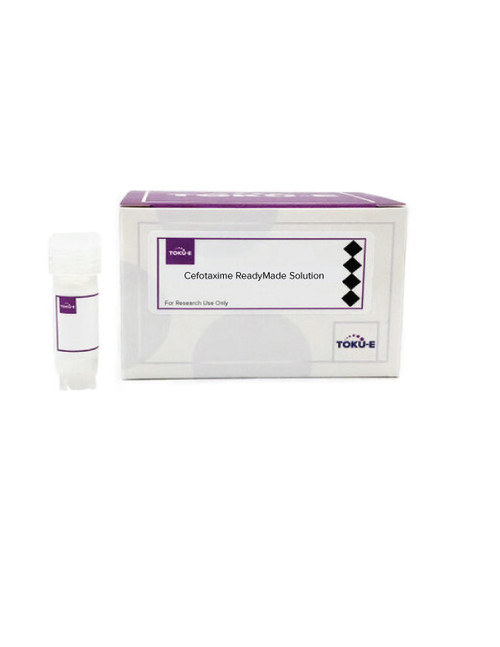MycoRid™ is a highly stable, solubilized aqueous formulation (1000x) of a polyene antifungal compound. It is a substitute for Amphotericin B (Fungizone). It has a lower level of cytotoxicity in cell culture due to the use of polysaccharide as a solubilizing agent, rather than sodium deoxycholate in Fungizone that has shown evidence of cytotoxicity in cell culture. MycoRid can be stored up to 3 months at 4°C, unlike Amphotericin B solution that is stable for one month at 4°C.
| Mechanism of Action | The active component of MycoRid™ has a similar mode of action to Amphotericin B (Fungizone). Polyene antimicrobials associate with membrane sterols in mammalian and fungal cell membranes and forms pores leading to essential ion leakage and ultimately, cell death. |
| Spectrum | MycoRid™ is active against fungal (molds and yeasts) cells and is not toxic to bacteria due to their lack of sterols. MycoRid™ is compatible with Pen-Strep solutions. |
| Microbiology Applications | MycoRid™ is used as an antimycotic selective agent in several routinely used selective media formulations to inhibit the growth of background fungal growth. |
| References |
Brajtburg J, Powderly WG, Kobayashi GS and Medoff G (1990) Amphotericin B: Current understanding of mechanisms of action. Antimicrob. Agents Chemother. 34(2):183-188 PMID 2183713 Cleary JD, Rogers PD and Chapman SW (2003). Variability in polyene content and cellular toxicity among deoxycholate Amphotericin formulations. Pharmacother. 23(5):572-578 PMID 12741430 Palumbo P et al (2010) Effects of phosphatidylcholine and sodium deoxycholate on human primary adipocytes and fresh human adipose tissue. Int J Immunopathol Pharmacol. 23(2):481-489 PMID 20646343 Perez-de-Luque A et al (2011) Effect of amphotericin B nanodisks on plant fungal diseases. 68(1):67-74 PMID 21710554 Rice LB, Louis B and Mahmoud A. Ghannoum MA (1999) Antifungal agents: Mode of action, mechanisms of resistance, and correlation of these mechanisms with bacterial resistance. Clin. Microbiol. Rev. 501-17 |







